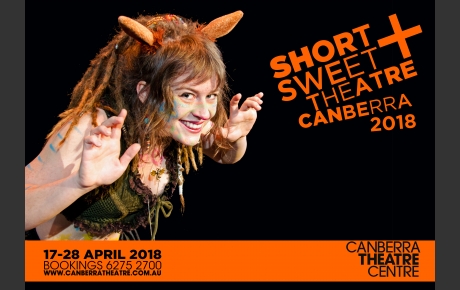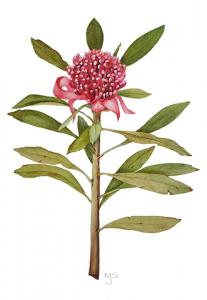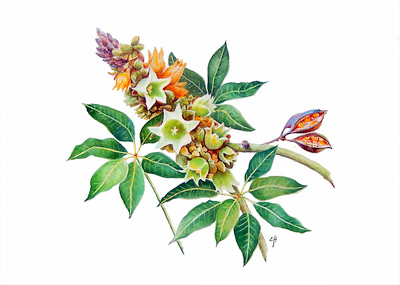The premise of Short and Sweet is simple. It features a series of plays that are ten minutes long. If the play overruns the ten minutes, the lights are turned off. There is one venue and no set. Whatever props and furnishings are used need to be carried on and off by the actors. This time was slightly different with a number of items such as chairs, tables and a coat rack hanging from hooks at the back of the stage to be used when required.
There is one lightning and sound operator - sound files and lighting cues must be given to this person by the director a week before the show so that they can all be placed on one file. The sound system and lighting rig are rudimental - no intelligent lighting systems or layered soundscapes are available. It is bare bones theatre, which can be good, or it can be bad.
Every level is a competition. The writers submit their plays and they are selected to be performed. The directors have access to scripts and they apply to direct what is available. Actors turn up for a group audition in front of all the directors and present a short pre-learned monologue. The directors will then decide whether they can use this person in their piece. Or not. There can be a bit of a bun fight. It can also be a great way of learning new skills and working to time-constraints with previously unknown practitioners in a way that is supremely challenging but hopefully rewarding.
The way around this is to set up as an Independent Theatre Company and then you can write your own play, direct it yourself and fill it with actors you've already asked to be in it, having rehearsed it as much or as little as you like. For all of the above reasons, these pieces are frequently the best or the worst of the whole show.
At each performance there are judges, who know about the art of theatre and performance and bring their knowledge and experience to the process in selecting the three best pays in their opinion, and there is a people's favourite voted for by the audience, who get to select two plays: these are often but not always the same thing. The people tend to like to laugh: they vote for comedy; they vote for topical and local geographical references; they vote for plays with multiple characters; and they vote for their mates.
The performances for week two are varied in content and execution - one of the hardest things about judging is knowing what exactly one is judging: is it the writing; the acting; the direction or the whole thing - the elements rarely combine in equal measure.
Adele Lewin gives a strong performance in Half a Mind (written and directed by Evan Croker) as an elderly woman whose dementia gives her chronic mood swings. She bullies her adult son (played with a fine level of sufferance by Stephen Walker), and forgets her own name and that of her children although she remembers all the parts she has played on stage, particularly Blanche DuBois - this is an actor's dream role even if the writing is a little unrealistic and over-theatrical.
 |
| Simon Doctor and Sarah Greenwood in The Jump |
 |
| Dec Hastings, Yarno Rohling and Stephanie Wilson in Procrasrination |
Writing a ten-minute play is very tricky: there needs to be dramatic action, engaging dialogue, and plausible characters. The Choir Needs to Get Rid of Trevor (written by John Lombard and directed by Vee Malnar) is nicely acted by Helen Way, Mark Smith and Ryan Pope with some amusing dialogue as the choir committee work out who is going to tell Trevor that he is tone-deaf and doesn't belong here. Knowing how incisive Lombard's work can be, however, the denouement feels a little tame. Madeline Woods displays a comic incredulity when she discovers she has been kidnapped by mistake in Keeping Annabelle (written by Rachel Welch and directed by Melinda May) but this feels like the beginning of a play rather than a whole, and it is intriguing to imagine whether Daniel Berthon will develop more nuance as the amateur abductor.
 |
| Madeline Woods and Daniel Berthon in Keeping Annabelle |
Maxwell's House written by Arne Sjostedt has some charming acting by Helen Way and Christopher Ritchie, and Cara Irvine does her best to direct a somewhat clunky script about a couple of strangers with a coffee obsession - so very Canberra to have a passion for the bean but nothing new to say about it. Director Amanda Gillespie also tries to wrangle some nuance out of the very one-note The Wedding Night Tweets (written by Daniel Guyton), in which the newlywed bride (Katherine Berry) commits every action and inaction of the groom (Jayme Makus) to social media scrutiny in the hope of a book deal. Writer Frank Legget tries to throw in a few twists to his Late Night Pizza (directed by Paul Jackson) but, although played with commitment by Ash Hamilton and Katherine Berry, they feel a touch too convenient to be shocking.
 |
| Katherine Berry and Ash Hamilton in Late Night Pizza |
 |
| The cast of Miss |
This is a great night out at the theatre demonstrating multiple talents and providing a fantastic platform on which emerging artists can perform.





